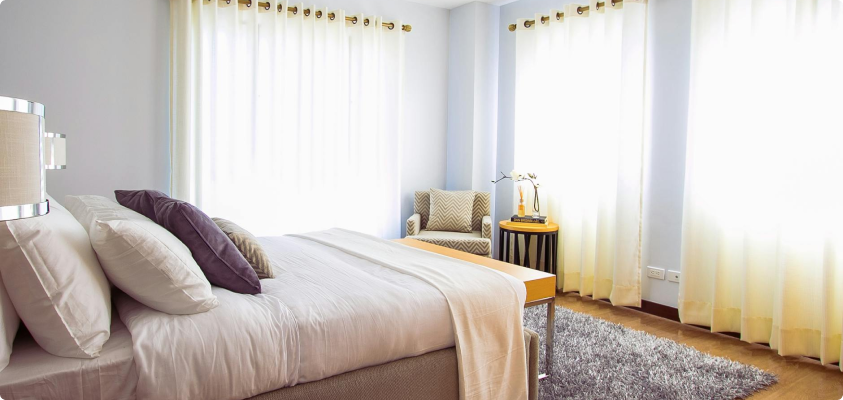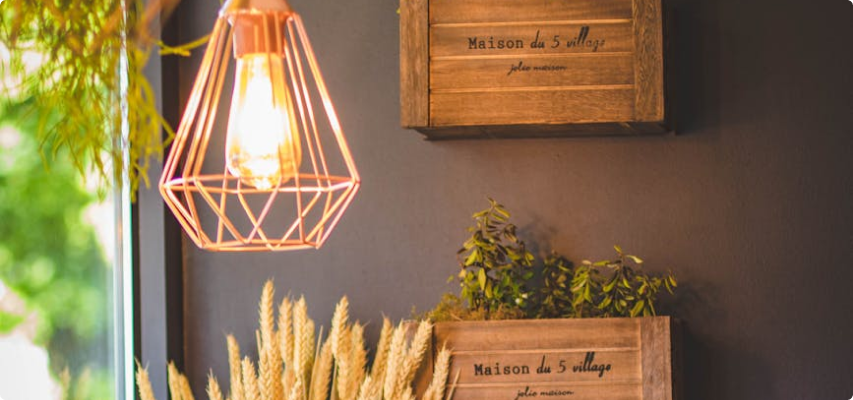1. Understand the Different Types of Lighting
Ambient Lighting: Provides overall illumination and is the primary source of light in a room. It ensures even lighting and helps you navigate the space comfortably.
Task Lighting: Focuses on specific areas where tasks are performed, such as reading, cooking, or working. It reduces eye strain and enhances visibility.
Accent Lighting: Highlights specific features or objects, such as artwork, architectural elements, or plants. It adds depth and interest to a room.
Decorative Lighting: Serves as a focal point or statement piece. It adds visual interest and complements the room’s decor.
2. Living Room
Lighting Needs:
- Ambient: Install ceiling fixtures like chandeliers, pendant lights, or recessed lighting for general illumination.
- Task: Add table lamps or floor lamps for reading and other activities.
- Accent: Use wall sconces, track lighting, or LED strip lights to highlight artwork or architectural features.
- Decorative: Consider a striking chandelier or pendant light as a centerpiece.
Tips:
- Layered Lighting: Combine ambient, task, and accent lighting to create a versatile and comfortable space.
- Dimmer Switches: Install dimmers to adjust the lighting according to different activities and moods.
3. Kitchen
Lighting Needs:
- Ambient: Use ceiling-mounted fixtures or recessed lights for overall illumination.
- Task: Install under-cabinet lighting to illuminate countertops. Pendant lights over islands or dining areas are also effective.
- Accent: Highlight architectural features or decorative elements with additional lighting.
Tips:
- Bright and Functional: Ensure task lighting is bright enough for cooking and meal preparation.
- Adjustable Fixtures: Use adjustable lighting to direct light where it’s needed most.
4. Dining Room
Lighting Needs:
- Ambient: A central chandelier or pendant light provides general illumination for the room.
- Task: Ensure the lighting above the dining table is bright enough for meals and entertaining.
- Accent: Add dimmable wall sconces or decorative lighting for a warm ambiance.
Tips:
- Fixture Height: Hang the chandelier or pendant light approximately 30-36 inches above the dining table for optimal lighting.
- Dimmer Switches: Use dimmers to adjust the lighting for different dining experiences.
5. Bedroom
Lighting Needs:
- Ambient: Use ceiling fixtures or recessed lights for general lighting.
- Task: Place bedside lamps or wall-mounted reading lights for focused lighting.
- Accent: Incorporate soft, warm lighting with LED strip lights or sconces to create a cozy atmosphere.
Tips:
- Adjustable Lighting: Use adjustable fixtures or lamps to control the light intensity and direction.
- Soft Lighting: Choose warm, soft lighting to create a relaxing environment conducive to sleep.
6. Bathroom

Lighting Needs:
- Ambient: Install ceiling fixtures or recessed lights for overall illumination.
- Task: Use vanity lights or sconces around the mirror for clear, shadow-free lighting.
- Accent: Highlight features such as a decorative wall or artwork.
Tips:
- Moisture Resistance: Ensure fixtures are rated for damp or wet conditions to handle bathroom humidity.
- Even Lighting: Position task lighting around the mirror to avoid harsh shadows.
7. Home Office
Lighting Needs:
- Ambient: Use ceiling fixtures or recessed lighting for general illumination.
- Task: Add desk lamps or adjustable task lighting to improve visibility and reduce eye strain.
- Accent: Consider accent lighting to highlight decorative elements or personal items.
Tips:
- Bright and Focused: Ensure task lighting is bright and adjustable to focus on work areas.
- Reduced Glare: Position lights to minimize glare on computer screens and work surfaces.
8. Entryway
Lighting Needs:
- Ambient: Use ceiling fixtures or chandeliers to provide overall illumination.
- Accent: Add wall sconces or decorative elements to highlight artwork or architectural features.
Tips:
- Welcoming Atmosphere: Choose warm, inviting lighting to create a welcoming entry.
- Sufficient Light: Ensure the entryway is well-lit for safety and visibility.
Conclusion
Selecting the perfect lighting for each room involves understanding the different types of lighting and how they impact the functionality and ambiance of your space. By combining ambient, task, accent, and decorative lighting, you can create a well-lit, inviting, and practical environment tailored to each room’s needs.
